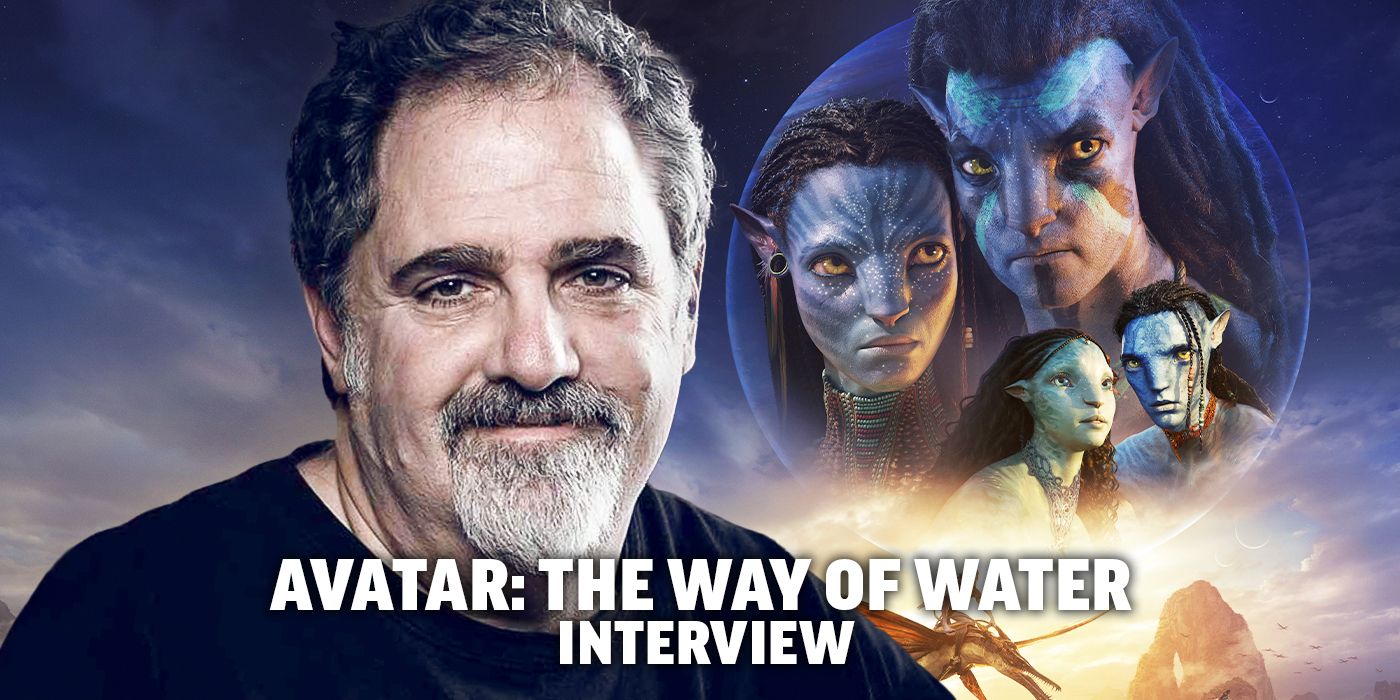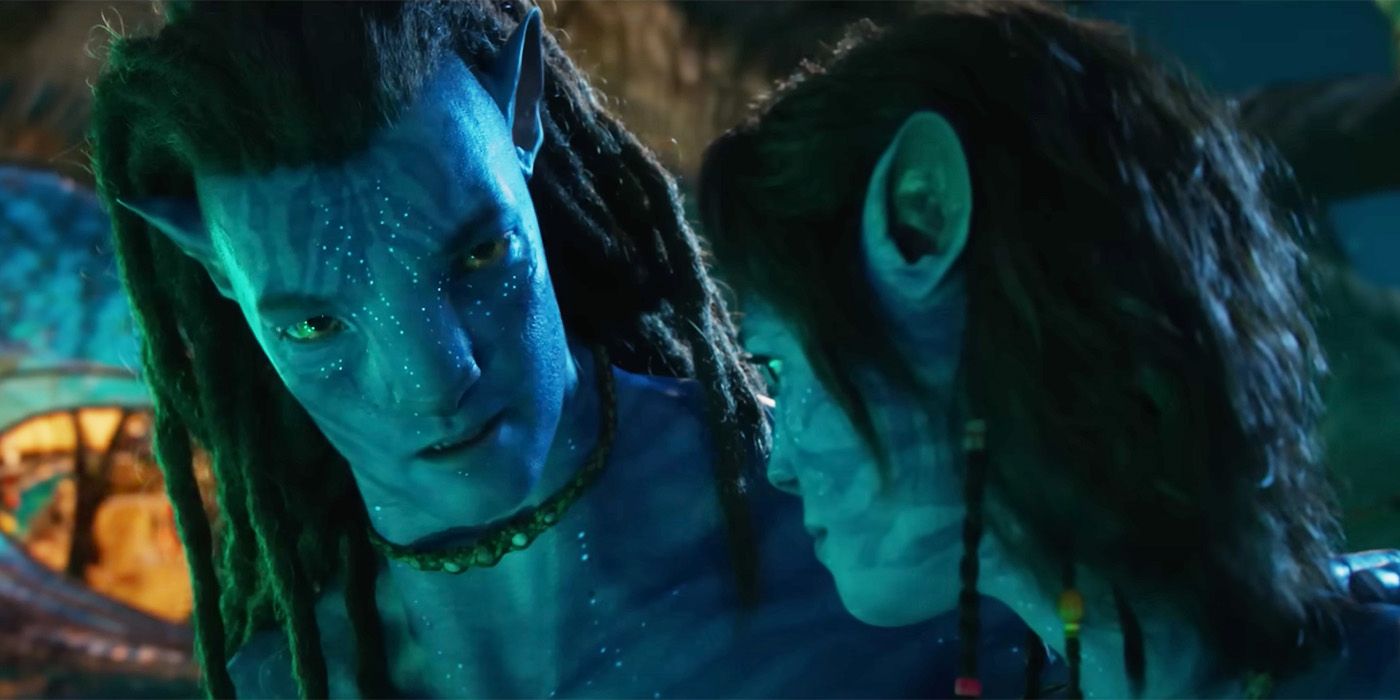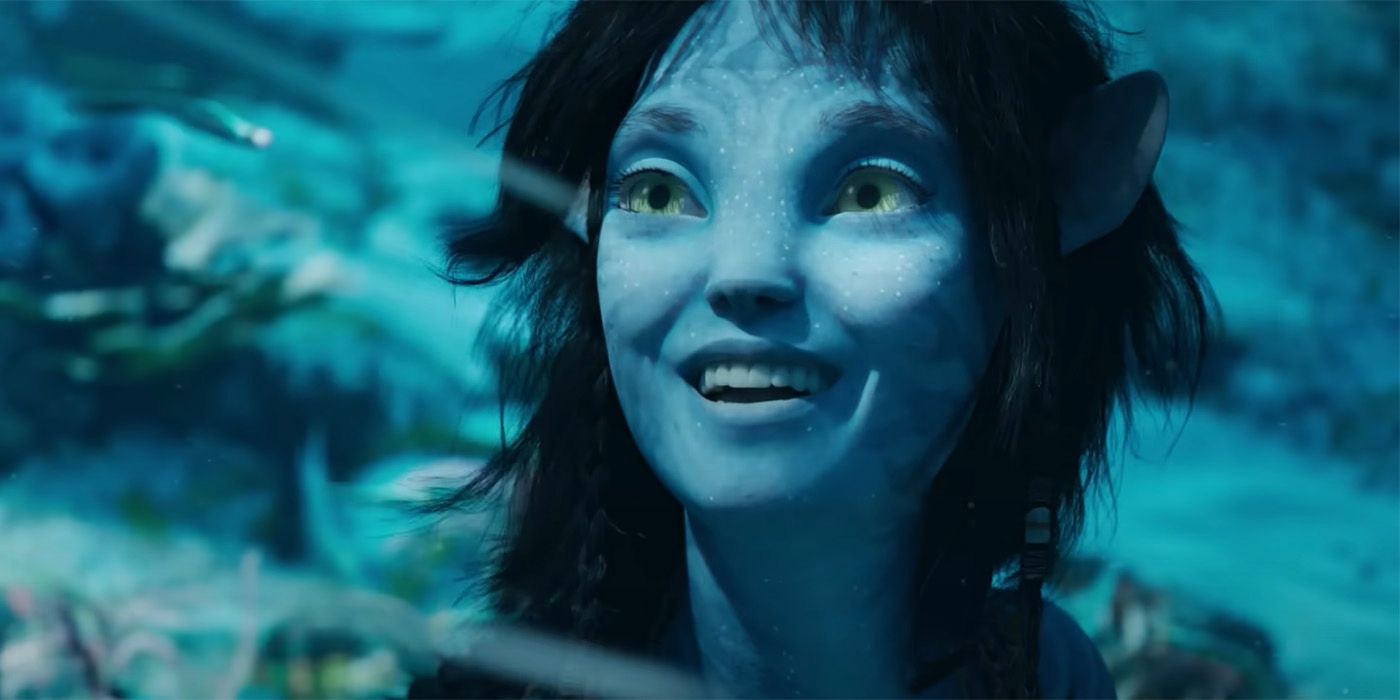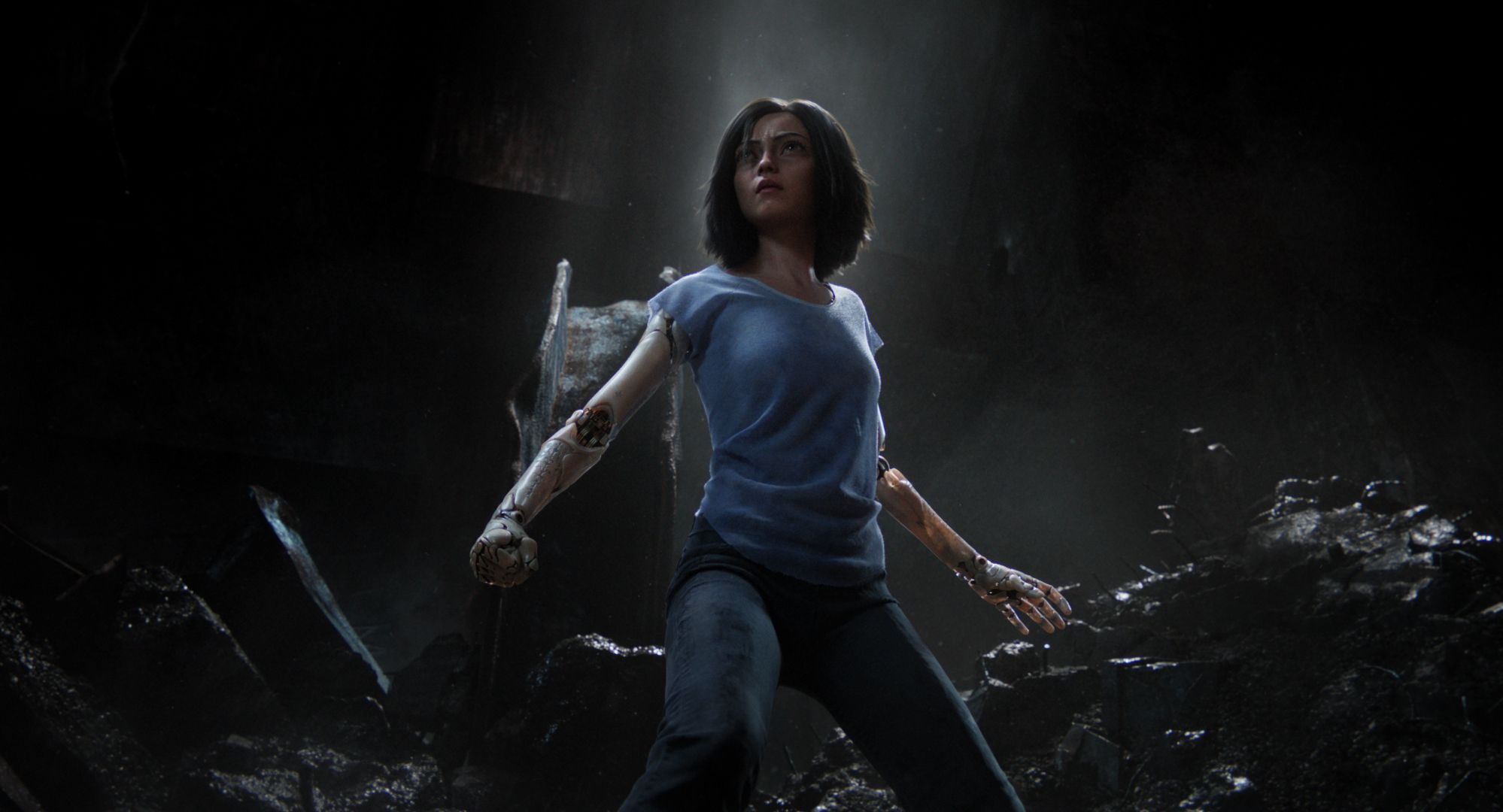Before audiences first explored Pandora in 2009's Avatar, producer Jon Landau worked with director James Cameron on 1997's Titanic, a collaboration that earned the duo a Best Picture Academy Award. Over the years, the two creators would continue to pioneer groundbreaking filmmaking techniques that would change the industry overall and also give them the tools they needed to pull off an unprecedented big-screen feat with Avatar: The Way of Water.
In the highly anticipated sequel, Cameron and Landau set out to deliver an experience unlike any before, a film that fully transports the viewer to Pandora. In The Way of Water, they use game-changing effects technology to expand the moon's rich lore via a script that sees the return of familiar faces like Sam Worthington's Jake Sully and Zoe Saldaña's Neytiri of the Omaticaya clan, while also venturing to new regions of Pandora like the seaside village of the Metkayina clan where we find Kate Winslet's Ronal and Cliff Curtis' Tonowari
Before The Way of Water hits theaters on December 16th, Collider’s Perri Nemiroff spoke with Landau about bringing the world of Avatar back to the big screen. During their conversation, Landau talked in-depth about the technology they were able to improve since the first movie and how it could be a useful filmmaking tool beyond the Avatar series. Landau also confirmed the Avatar sequels will explore new biomes and clans moving forward. For all of this and more, watch Perri's interview with Landau in the video above or read the transcript of their conversation below:
PERRI NEMIROFF: It feels like these movies are defined by ambition, but what is something you managed to achieve on The Way of Water that would make 2009 Avatar-making you go, "I cannot believe we'd actually be able to pull that off one day?"
JON LANDAU: I think where we really got to on this movie is about the close-up. I think that when you see Jake and Neytiri, and you see Lo'ak and his feelings, we could not rise to that level of performance on the first film. We couldn't do it from a nuance standpoint. We couldn't do it from a photo reality standpoint. In this movie, we have those CG characters standing right next to human characters, and you don't even think twice about it.
My favorite thing is the way that rainfall glistens off of them. There's a level of precision to that that I never thought I'd ever see.
LANDAU: Well, what we really wanted to do is take our real-life experiences. And we've been in the rain, and we've been in the water, and we've come up, and Jim and I both dove and know what the hair's like afterward, and how the beads of water drip down you. And salt water's different than freshwater, and all these different things. We really challenged WÄtÄ FX to look at all that, to learn that, to understand it, and then, we were able to have an eye based on our life experience to challenge them on a daily basis to make it real.
Going back a little, I was reading about that technology summit you did in February of 2010, and the idea of isolating what you thought worked really well in the first film, but then also picking things that you thought that the team could improve upon, so can you give me an example of each there?
LANDAU: Yeah, so we did what is now referred to as a retreat. I used to call it a postmortem. Jim said to me, "Jon, nobody died. You can't call it a postmortem." "Okay, Jim." So we got together all of our department heads and we talked about these type of things. A thing that worked well the first time was what we call Simulcam where we were able to look through the lens of a camera and see a CG character that wasn't there, but compositionally, the director could frame for it. So like when Jake Sully woke up the first time, Jim was able to compose seeing the CG character there.
What didn't work back then was that CG character could only stand in front of things like the weatherman stands in front of a screen. So we challenged ourselves to do what we call real-time depth compositing where we would now have scenes where a character could walk behind a CG character or walk in front of them. A CG character could walk behind a desk. So we challenged the teams to come up with it, and no one had ever done that before, and they cracked that.
With all the innovative tools you've made for this series, is there any particular one that you're most looking forward to seeing another production use in the future? Something not Avatar related?
LANDAU: Look, I think it's something that relates to what we just talked about, something that relates to the depth compositing, something that relates to the Simulcam. Because not every movie has computer-generated characters in it, but a lot of movies now, today, shoot green screen or blue screen, and those elements aren't there and directors are left to try and imagine what's there. Our tools allow others to see what would be there. And we don't want ownership over these. We want these tools to become ubiquitous so that more and more filmmakers do use them.
You change the game for the industry! I really could never have imagined you upping the level of the technology in this movie as much as you did, and the thought of this affecting movie-making and that craftsmanship, in general, is mind-blowing to me.
LANDAU: Well, I think what you just touched on, I hope that it unlocks a door that other filmmakers now really believe, if they dream it, they can do it. Because I want to see those movies. I want to experience those movies. Don't be limited by what you think can be done. If you dream it, it can be done.
Looking ahead a little, I know James has said that at some point in the future he would be open to passing the directing reins over to another filmmaker. I know there's wonderful filmmakers out there, but I have a hard time imagining anybody else on this planet directing an Avatar movie. Do you think that's a real possibility, or will it likely not happen?
LANDAU: I think those are two different questions, right? I do think it's a possibility because I think you would've said the same thing when Jim wrote his draft of Alita: Battle Angel, that Jim's never going to give this up for someone else to do. And we found a director who wanted to continue with what our vision was of the movie and allowed us to create a partnership with Robert [Rodriguez] where I was on the set every day with him, we edited the movie in Los Angeles, we were very much a part of the visual effects. So I think there are directors who can do that, and that was a great experience. And I think Jim is saying it now because of that experience with Robert. I think that proved to him that, when he's ready, there will be someone. Do I ever think he's gonna be ready? I'm not sure about that one.
I think I'm believing that! I also feel like you have a whole lot of technology here that would serve an Alita sequel well because I know the talk for that is never going away. People will always want another one of those.
LANDAU: No one more so than we do. We want to do it. But, we're also the type of people, we give 110% of ourselves to whatever we do. It's not something we could have focused on in the midst of Avatar: Way of Water. It's something that, a couple of weeks ago, I was talking to Robert. We've had numerous conversations. So it's something that we still want to happen.
The more of that character, the more Rosa Salazar this industry has, the better.
LANDAU: Rosa, oh my god. She is amazing. And again, her character and the way Rosa played it, I just love it. The story that is so relatable, her character, and I say about her, she's not a perfect person and she has her flaws, but she rises up to do it. She pulled it off. It was great.
Speaking of the future of this franchise and the technology, like I said before, I could never have predicted how high you'd raise the bar in terms of the visuals in Way of Water, but given the fact that we're gonna get 3 and hopefully 4 and 5 a lot sooner than we did this second movie, what can people go into those next sequels expecting in terms of you continuing to raise the bar with the tech?
LANDAU: Well, I think we're gonna continue to raise the bar with the storytelling first. I think that what we're gonna do is go out and meet new clans. We're gonna go out and see different biomes, and that's gonna present its own technological challenges. How do we present those? Just like water presented challenges in this one.
And, what we're gonna also continue to do is not look at just how we use the tools of technology, but how do we get the exhibition community on board with creating a ubiquitous improvement across all theaters? Because that's what we have to do as we compete with more and more home streaming and bigger screens. It's not just about the content we create, it's a partnership with exhibition.
I harped on the tech a lot here, but one of my favorite things about the movie is that all of those incredible visuals always feel like they're in service of character and storytelling, first and foremost, beyond just having a pretty picture for us to look at, and I appreciate that.
LANDAU: Thank you. Our whole focus is on that, and if somebody says, "What are you trying to do in any moment?" It's to create an actor/director-centric process that allows an audience to experience Kate Winslet, Stephen Lang, Sigourney Weaver, Britain Dalton, Tuk! Britain's so great. I mean, look, Margery Simkin, our casting director, did a phenomenal job. Even Jamie Flatters, you know? And how he underplays his big moment, and those type of things. I love it.
Avatar: The Way of Water is in theaters on December 16th. For more conversation about the film, check out Perri's chat with stars Sam Worthington and Zoe Saldaña below:




